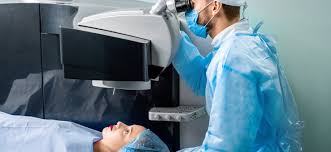Laser surgery is a medical treatment that uses concentrated light to cut tissues. Unlike other light sources, a laser has very specific wavelengths, making it powerful enough to allow surgeons to work with high levels of precision. Typically, there is a diverse range of surgical applications which use laser technology. From cosmetic procedures to general surgery, surgeons use lasers from dealers like The Laser Trader to remove and coagulate tissues.
Depending on the delivery system, laser type, and wavelength, lasers are able to replace conventional surgical tools because they are less invasive. Surgeons use laser technology in either non-contact or contact mode to conduct various procedures, such as:
- Urology
Nowadays, there are great treatment options that give patients relief from the pain of kidney stones. If you have discussed with your doctor about the condition and decided that Holmium laser treatment is a perfect option for you, it would be best to know how the surgery works. Usually, the surgery is minimally invasive and doesn’t need incisions on the body. Immediately you’re ready for the treatment, your surgeon will place a ureteroscope into your bladder and urethra to access the kidney and ureter.
With the help of a laser fiber, your surgeon will transmit Holmium energy to break kidney stones. The surgeon may also use a powered laser with high-frequency emissions, which ‘dust’ the stones into a finer powder.
- Transmyocardial Laser Revascularization
Transmyocardial laser revascularization (TMR) is a treatment for patients who have coronary artery condition and have not responded to procedures like stenting and angioplasty. During the procedure, surgeons make a small incision on the left side of the chest and use a carbon dioxide laser to create some channels in the heart that can improve blood flow.
A computer directs the laser to the right area of the heart to prevent electrical disturbances. This procedure takes around two hours for surgeons to perform, and patients may need to stay in the healthcare center for almost seven days to recover.
- Tumor Removal
The Nd:YAG and carbon dioxide lasers are used to destroy or shrink tumors. They may be used with flexible and thin tubes referred to as endoscopes to allow surgeons to observe and work on the body parts that can only be reached through surgery. The endoscopes may also help surgeons position the beam of the laser properly to hit the target.
Lasers may treat different types of cancer. In the rectum and colon, lasers can remove polyps that may grow and become cancer. Lasers can also seal nerve endings to decrease pain after surgical procedures and may cover the lymph to limit and prevent tumor cells from spreading.
The Bottom Line!
Lasers have tremendously made great progress in the area of surgical applications. The reason for this is that lasers have an intense and collimated beam that releases a lot of energy in the targeted tissue, though you can adjust the concentrated light a bit to avoid collateral damage.
The ability to concentrate the laser beam allows surgeons to carry out ablation of tissues, rather than using steel scalpels. Therefore, laser technology is of great help in the medical industry, and in the near future, researchers expect it to bring more great things in the healthcare sector.
